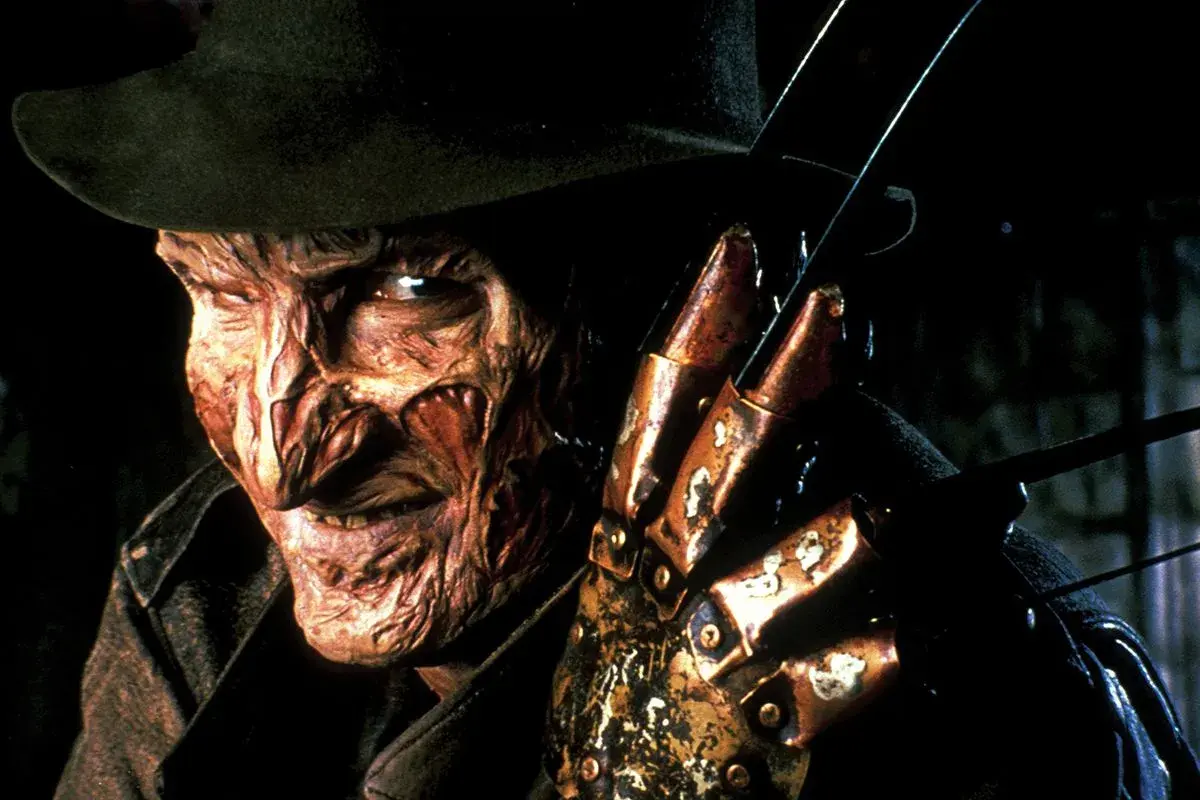Copyright Newsweek

When the first "A Nightmare on Elm Street" film was released in 1984, nobody quite knew what the impact would be. That is certainly true for series star Robert Englund, who took on the role of Freddy Krueger. More news: ‘Scream 7’ Trailer Shows First Look at Neve Campbell’s Return to the Franchise Krueger's iconic burnt face, striped sweater, and razor claw became a mainstay in the horror community and the slasher subgenre of horror films. What happened past the initial film was a slew of sequels, which are now being released for the first time as a seven-movie collection in 4K and UHD for the first time. Englund sat down with Newsweek to discuss the film collection release, along with the enduring legacy of his time as the horror icon who has terrorized dreams for over 40 years. Warner Bros. is releasing 'A Nightmare on Elm Street' franchise as a seven-film collection for the first time in 4K and Ultra High Definition. What does it mean to see these movies preserved, updated, and reintroduced to a new generation? "Well, obviously, you know, it's great to have everything you know, new and pristine again. You know it's like when I was young, I had to schlep to the UCLA Film Archives for their five o'clock screenings to see a decent print of anything. But you know, with me, I had this flash about a year ago, I realized how many fans experienced most of the franchise on VHS or early DVD, and maybe they didn't have a big flat screen for the DVD. "But so I want to say to all fans of the franchise that if you have a favorite, for instance, the Rennie Harland-directed film part four, which is shot by the brilliant Roy Wagner, who went on to, of course, change network television with his beautiful cinematography on CSI, which just made television look better. You know, period. Get a 4K because, get the collection, because it's so pristine and crisp and and it's like you've never seen it before." "I've only seen, you know, part four of the 4K franchise 'Nightmare on Elm Street,' but it's so great, you know. And everybody's just, you know, that likes the franchise and remembers it, especially if you've only seen it on video. I encourage you to experience it absolutely." For the "A Nightmare on Elm Street" 40th anniversary, stepping on set for the first time. Did you think at any point that this character would have such a long-standing cultural impact? "Oh, listen, it was the last thing on my mind. I just wanted people to see the movie, and I wanted us to finish it. We apparently ran out of money right towards the end. Had to sell off the video rights, but I wanted to have audiences see it because I knew we were onto something special. But I thought it was a one-off, you know, a winner. I thought, if we're lucky, if we are lucky, it'll become a cult film, but I knew there were some talented people involved, especially Wes Craven, and he was our captain. But no, I mean, I had no idea. And you know, for us to be going into the for, it's been 42 years now since Nightmare One, and you know, we've got the anniversary of Nightmare Two coming up, or we're in it right now, Jack Sholder's film, and it's amazing to me." As a classically trained actor, how did you bring that background into Freddy Krueger and make him a larger-than-life horror icon character? "When I did Freddy, I had been doing a television series, and I was, you know, into that, no acting. Don't get caught acting moment, you know, just sort of relaxing and breathing and just trying to be on camera. And when I was covered up after four hours of having that makeup, you know, that colostomy bag loose, poured all over me and foam latex and being poked with those crusty Japanese makeup brushes, I realized that I could change my physicality. I wasn't embarrassed. I could use some tricks from the theater to move differently and walk differently, and posture differently." Is there any particular scene that you saw after shooting or while you were shooting that stuck with you over these years? "Well, I mean, there's always stuff that you know is going to be cool, you know, my entrance in Wes Craven's 'New Nightmare' where I lift up out of the bed, you know, that's great. But also the one I improvised, which is when I come out of the closet and say, 'Miss me.' If Wes Craven were here to see the franchise's ongoing legacy and this 4K release, what do you think he would say about it? "Well, Wes is a filmmaker, you know, he's a writer first and a director second. But Wes has done so many movies over the years and spent so much time in the lab with color timing, you know, and effects and post production that I think Wes would have loved getting together with all of his cameramen, and all the different cameramen and the other directors and and people and just, you know, tweaked and perfected the stuff you know, that he always wanted to do. You know, maybe have a little more light in one of Heather's tears as it drips down her face or something, or a little more bottom light that he could turn up now with the new technology." The horror and the slasher subgenre of horror has changed drastically since the 1980s. What do you think Freddie still offers audiences that modern villains can't? "Well, I mean, there's a nostalgia, obviously, to the Nightmare on Elm Street films. But also, Freddie is kind of a first. He really is, you know, a boogeyman with a personality, and so that's fun. And then there's the great strength of the survivor girl, the heroine running through all of them. Freddie's always stopped by the survivor girl; he's always thwarted by his young ingenue all the way through, who's losing her innocence and entering the world. And she'll be different after this movie. She'll never be the same again, but she'll be stronger, and she survived. And I think that's a real gift. I think that, you know, and with all love to Jamie Lee Curtis, and with all love to Sigourney Weaver, I think the 'Nightmare on Elm Street' girls were really the ones that finally cemented the horror fan girl as part of the population of the world in terms of fandom." The entire seven-film 'A Nightmare on Elm Street' collection is out now in 4K and Ultra High Definition. The series includes "A Nightmare on Elm Street" (1984), "A Nightmare on Elm Street 2: Freddy’s Revenge" (1985), "A Nightmare on Elm Street 3: Dream Warriors" (1987), "A Nightmare on Elm Street 4: The Dream Master" (1988), "A Nightmare on Elm Street 5: The Dream Child" (1989), "Freddy’s Dead: The Final Nightmare" (1991), and "Wes Craven’s New Nightmare" (1994). Additionally, it also includes uncut versions of "A Nightmare on Elm Street" and "The Dream Child." To watch the entire interview, watch the video above.



